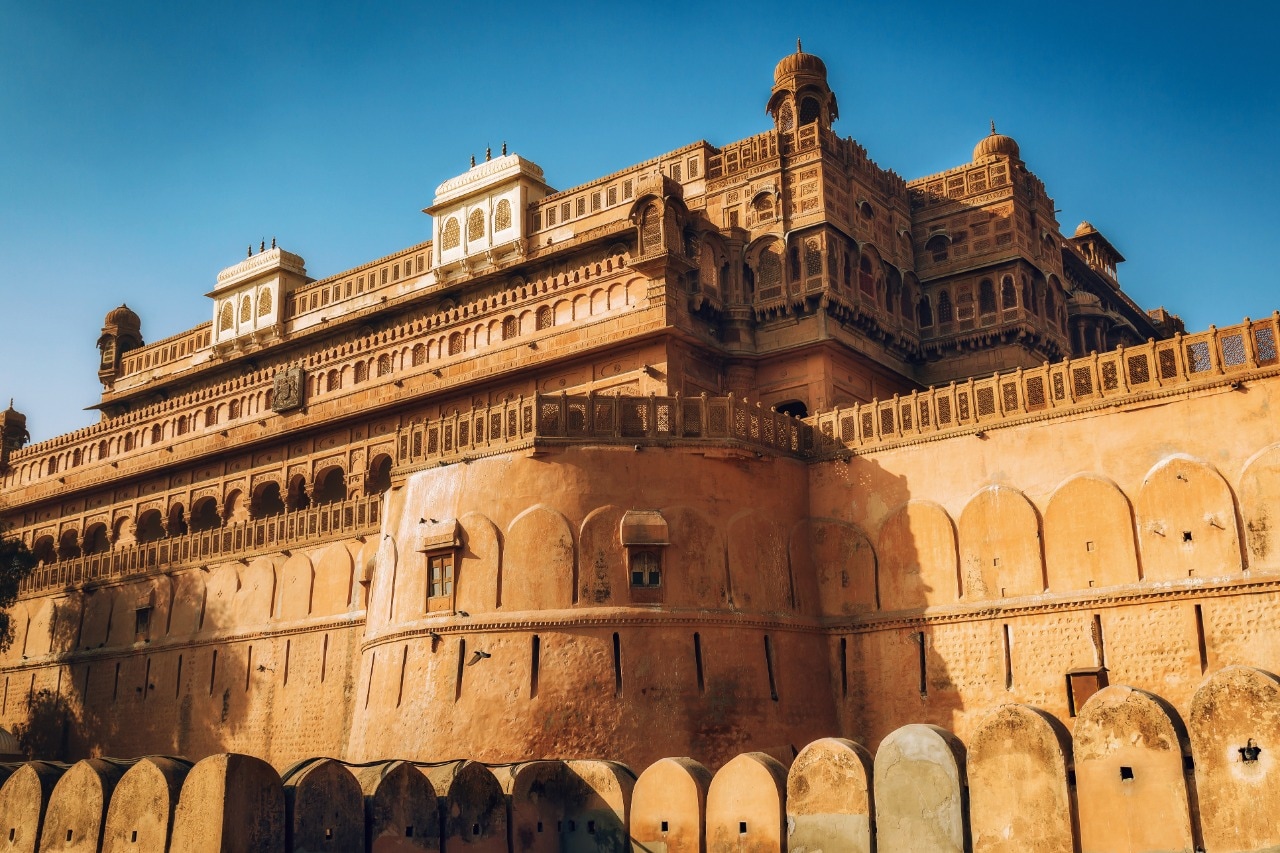The Junagarh Fort Bikaner is a massive fort in the heart of the city. It is considered to be one of the top attractions in Bikaner. It was earlier referred to as Chintamani. In the 20th century, the Junagarh Fort was renamed. The new sections of the city was built around this fort, nearly 1.5 km away from the city centre. The fort houses several temples, pavilions and palaces, covering an area of 5.28 hectares. Some of the interesting facts about Junagarh Fort has been mentioned below.

Inside the fort, you will be able to find major temples like the Ratan Behari Temple and the Har Mandir Temple. You can also visit the palaces inside the fort-like Karan Mahal, Anup Mahal, Ganga Mahal, Phool Mahal, Badal Mahal and Chandra Mahal. There are also a few Bikaneri Havelies within as well as outside the fort, which are worth a visit. The famed Junagarh Fort Museum is also a must-visit when visiting this place to get a glimpse at the history of the city.
History of Junagarh Fort
Formally known as Chintamani, the Fort was renamed to Junagarh in the early 20th century. Locally, it is also famous as Old Fort. The foundations of the Fort were laid by Rao Bika back in the year 1478 and it was inaugurated on 17th February 1589. The Fort is an architectural feat that is built with finesse and explicit engineering prowess. The design is a unique amalgamation of Rajput, Gujarati, and Mughal styles of architecture, along with some European motifs and elements. The monuments inside the fort are an exemplary feat of engineering and architectural abilities of 16 generations of rulers who ruled the city of Bikaner in the late 16th century. The fort also comprises of an eclectic mix of Gothic archways, mansions, Hindu temples, Buddhist monuments, and mosques that must be seen with your own eyes to be believed.

Architectural layout of Junagarh Fort
Bounded by a moat, Junagarh fort has an intimidating structure. The palace complex houses some wonderful structures in its boundaries. Palaces in marble and red sandstone make up for a wonderful collection of kiosks, windows, balconies and courtyards that look stunning.
Junagarh fort complex has two entrance and has a total of 986 long walls that have 37 bastions. There are a total of 37 palaces, along with a number of pavilions and temples. One of the highlights of the architecture of Junagarh fort is its stone carving with an excellent quality. Number of rooms of the palace have paintings and decorations that were done in traditional style.
Suraj Pol and Daulat Pol are two main gates of the fort. Suraj Pol or the sun gate was east facing and was the main gate of the fort complex. The historical Daulat Pol has the handprints of the royal ladies who had committed sati along with the pyres of their deceased husbands, at the Sati Stambh. Chand Pol, Karan Pol and Fatech Pol were the other inner gates.

The Zenana or the latest quarters are extremely lavish and are a display of unique artistic skill. While they royal ladies were an integral part of the household, they were not really a part of the matters of the state. They used carved stone screens for interaction with others. These screens can be seen displayed here. Do not miss noticing the mirror work, paintings, and lacquer work. The minarets, columns, arches and pavilions are gigantic and imposing.

No comments:
Post a Comment